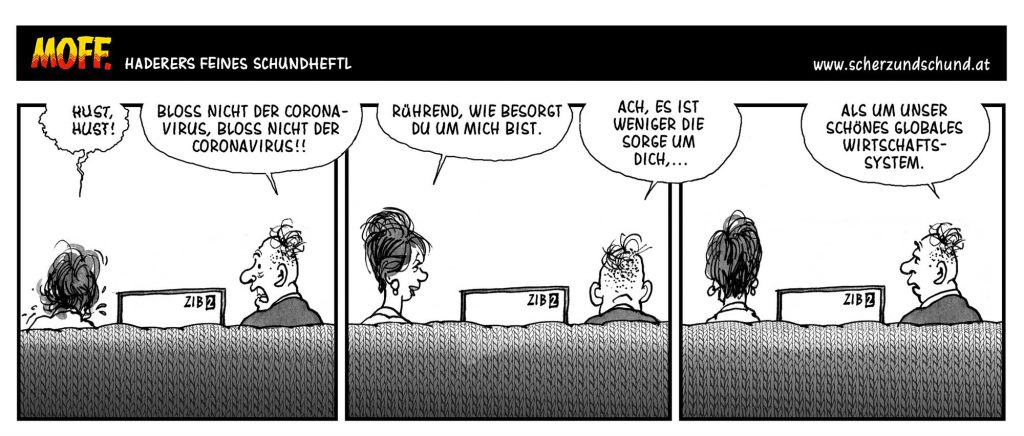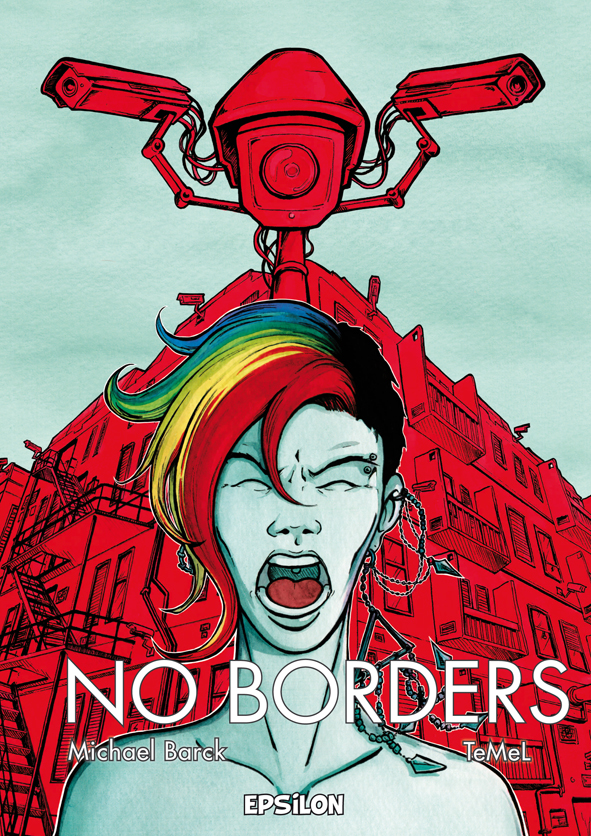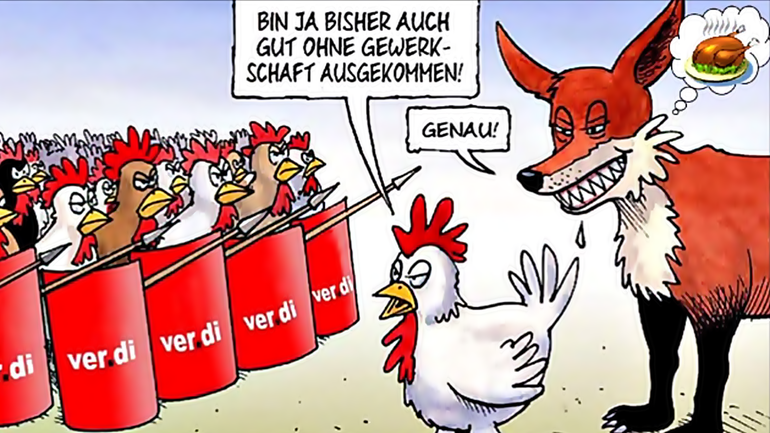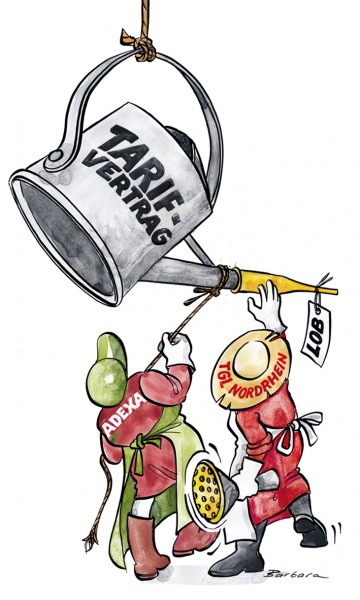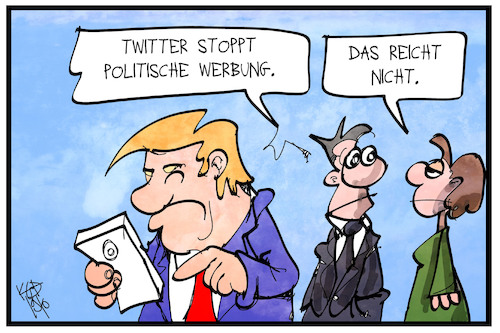Comics as statement
![]() Where do I start? In a world where so many things don’t seem the same as they did a few weeks ago? With a hint that we celebrate 30 issues of #visdo with this blog post? I’ve decided not to put too much emphasis on one or the other topic this time, but instead to give you a tool to celebrate the small #visdo anniversary – to find the right words in a time when many discussions are shifting to the online world and there’s so much to say. And that with comics!
Where do I start? In a world where so many things don’t seem the same as they did a few weeks ago? With a hint that we celebrate 30 issues of #visdo with this blog post? I’ve decided not to put too much emphasis on one or the other topic this time, but instead to give you a tool to celebrate the small #visdo anniversary – to find the right words in a time when many discussions are shifting to the online world and there’s so much to say. And that with comics!
Comics can be well embedded in your own educational work to address current political and social issues such as Covid-19, democracy or the distribution issue. They can be used as a basis for discussion, as food for thought or simply as a highlight of a particular content.
I don’t think it is possible to completely outline the topic of comics in a single blog post. There would be so much to say. There are so many examples to give and so many aspects to look at, such as – just to name a few – storytelling, drawing skills, perspective, metaphors, analog and digital tools, idea generation, structure, history of comics and much more. If you want to dive deeper into the world of comics, I can highly recommend the books by Scott McCloud: „Reading Comics Right“ and „Making Comics“. For a start, this time we will look at how the process of comic creation works and how you can use the 3-act structure in the process.
Basic idea
What is a comic, anyway? A comic is a sequence of pictures (often in combination with text) that tells a story. This often happens with humour, exaggerations are used to dramatise facts and metaphors to create haunting images. As an art form there are no limits to the comic itself. However, anyone who wants to use it to make strong statements is always caught between bland, meaningless images (which in reality interest no one) and exaggerated, provocative statements (which can sometimes hurt feelings and harden fronts). How far one wants to go (caricature physical features, take up religious themes…) always remains a personal decision in the end.
The process
How do you arrive at a comic now? The following steps will help me in the process:
1. Brainstorming
Before you start drawing, you should think about what you have to say. What message do you want to communicate and who do you want to reach? In this phase it makes sense to write down everything that comes to mind and to group and structure the ideas to choose one of them.
2. Research
Some artists like to research how others have already dealt with the topic. This has the advantage that one does not run the risk of repeating already existing images and clichés (because then one consciously refrains from doing so). But it can also lead to the fact that one’s own ideas and thoughts very much follow predetermined paths. If you decide to do research, you should make sure that your own ideas are not too close to the references. A good approach is to combine several ideas with each other or to turn something into the opposite.
3. Sketches
Now it’s time to draw. Before one commits oneself to a specific picture, it is recommended to make several sketches. It is important not to simply draw the same thing over and over again, but to test different motifs and perspectives. Important elements should be large and only one idea per panel (picture) should be worked on, otherwise it can easily lead to a chaotic situation.
4. Feedback
Once the sketches are finished, you can get feedback from colleagues, friends and family. Often one cannot see the forest for the trees and cannot judge one’s own pictorial ideas objectively. Therefore, ask whether the ideas are understandable, which variation is most meaningful and what has the strongest emotional impact.
5. Final artwork
Once the decision for one of the sketches has been made, the final drawing is produced. This can be done analog (on paper) or digital (my favorite is the App Procreate on the iPad). The text (speech bubbles) can either be written by hand or added digitally. If digital text is planned, make sure to allow space for it when drawing.
The 3-Act
Many comics work with 3 acts. That means there are three pictures that make up the story. Each of the pictures fulfils a task:
1. The introduction
In the first picture the 5 W-questions are answered: Who does what, where, when and why. The context of the story is established and readers are introduced to the world of the comic strip.
2. The confrontation
A conflict arises, something goes wrong or something unexpected happens. This is the emotional climax of the story, as it were.
3. The resolution
How the conflict is resolved always says something about the character in the comic (and ultimately about the illustrator). How does the protagonist react? Does he or she get angry? Sad? Does he or she react with a sarcastic comment? Or even indifferent?
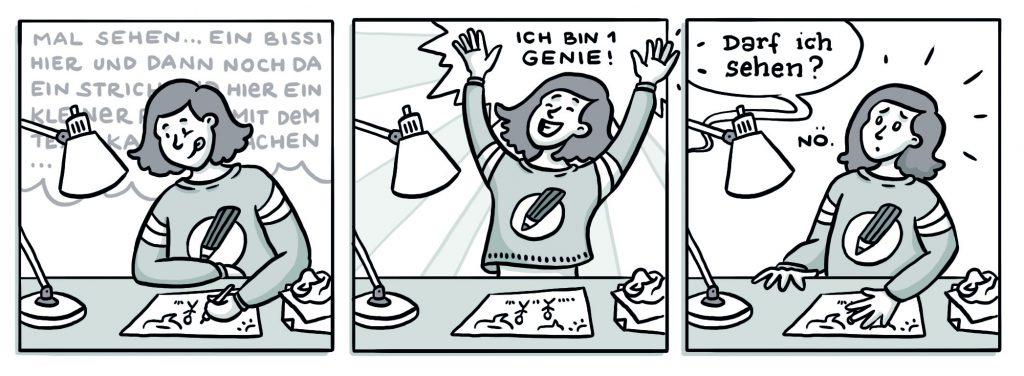
Try it out, have fun experimenting and most importantly – share your comics with others. It’s a shame the world has never seen so many great pictures and comics because they’ve disappeared in a drawer. Have the courage to do it!
Author: Lana Lauren
Translation: Astrid Donaubauer
Read original article in German

Dieses Werk ist lizenziert unter einer Creative Commons Namensnennung-NichtKommerziell-Weitergabe unter gleichen Bedingungen unter gleichen Bedingungen 3.0 Österreich Lizenz.
Volltext der Lizenz

